
How to Use LM 358 Module OP-AMP: Examples, Pinouts, and Specs
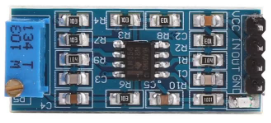
 Design with LM 358 Module OP-AMP in Cirkit Designer
Design with LM 358 Module OP-AMP in Cirkit DesignerIntroduction
The LM358 is a dual operational amplifier (op-amp) module designed for a wide range of analog signal processing tasks. It can operate from a single power supply or dual power supplies, making it highly versatile. The LM358 features low power consumption, high gain, and a wide bandwidth, making it ideal for applications such as signal conditioning, filtering, and amplification. Its compact design and ease of use make it a popular choice for both hobbyists and professionals.
Explore Projects Built with LM 358 Module OP-AMP
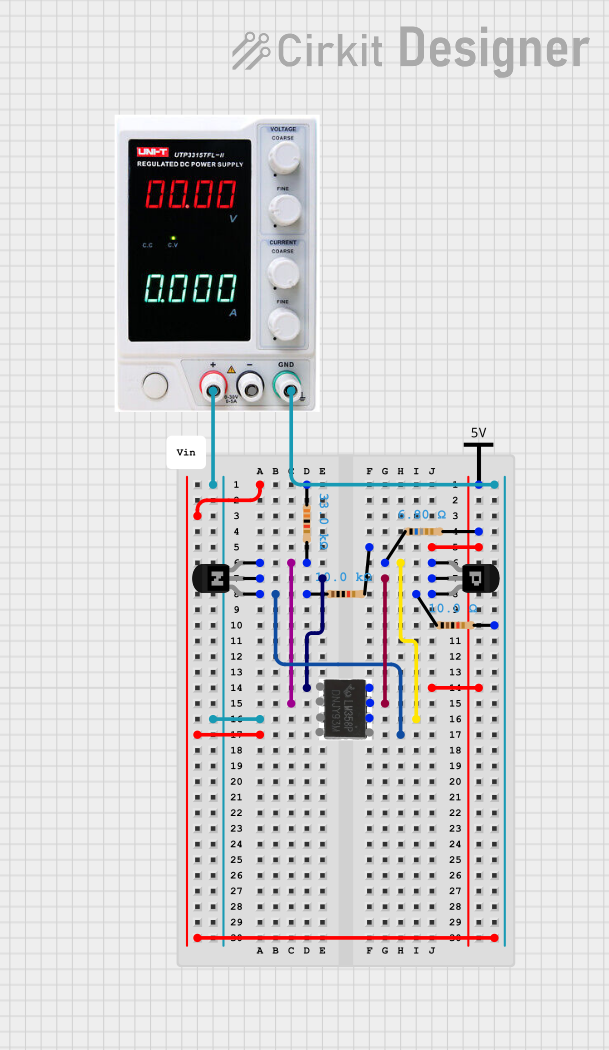
 Open Project in Cirkit Designer
Open Project in Cirkit Designer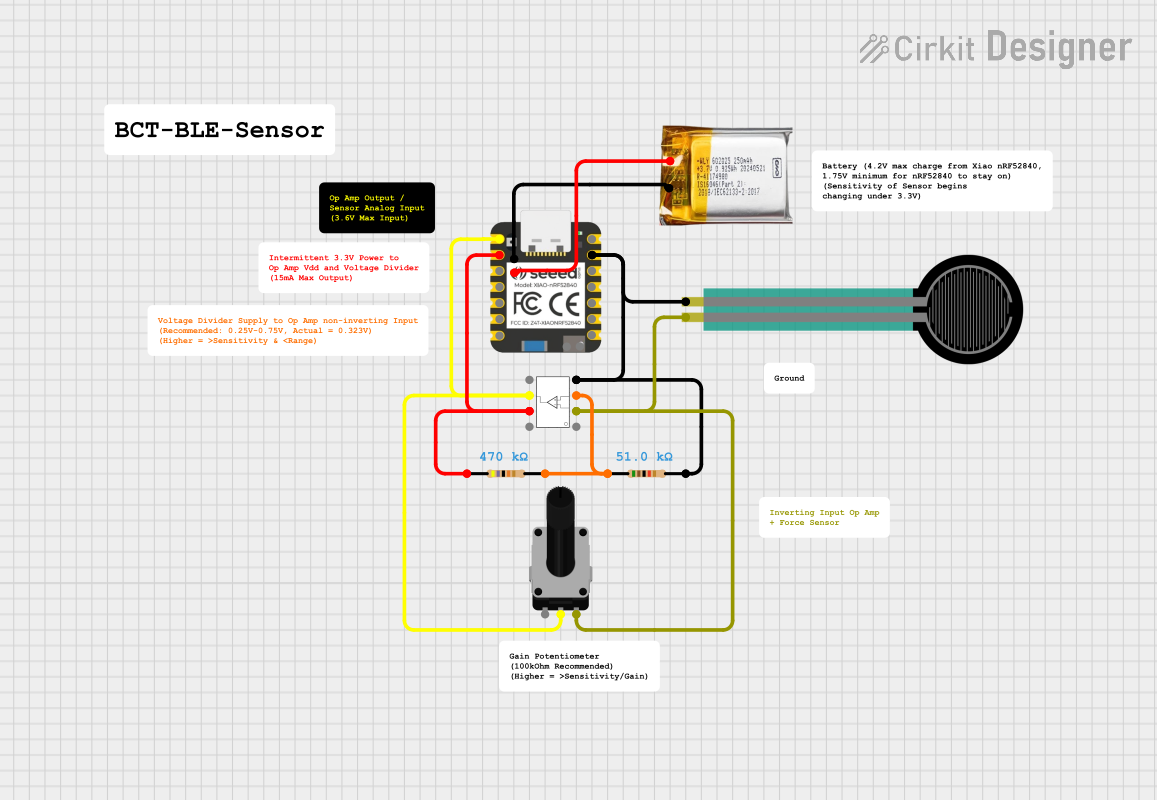
 Open Project in Cirkit Designer
Open Project in Cirkit Designer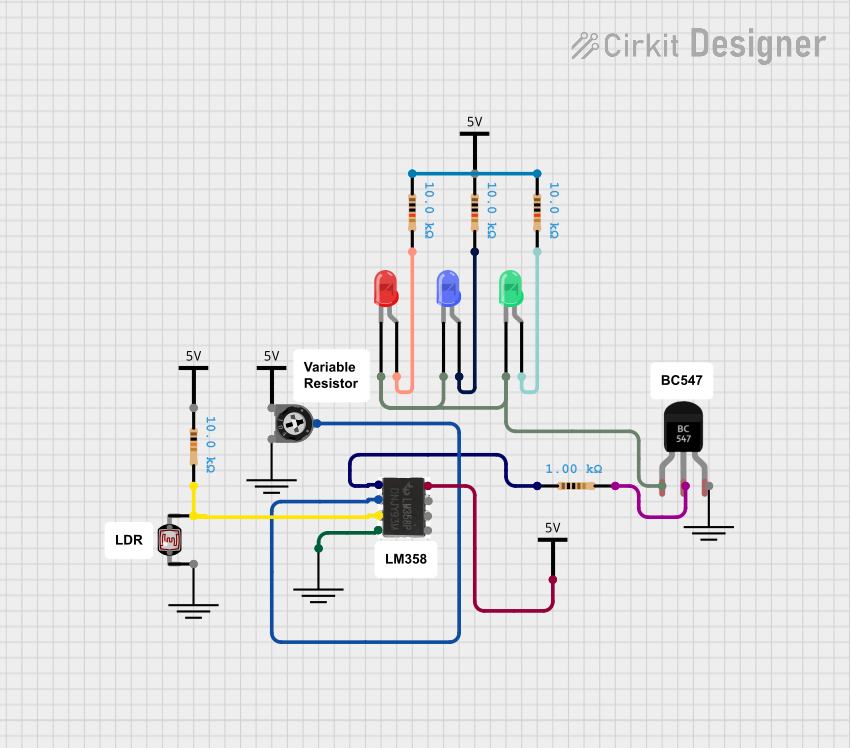
 Open Project in Cirkit Designer
Open Project in Cirkit Designer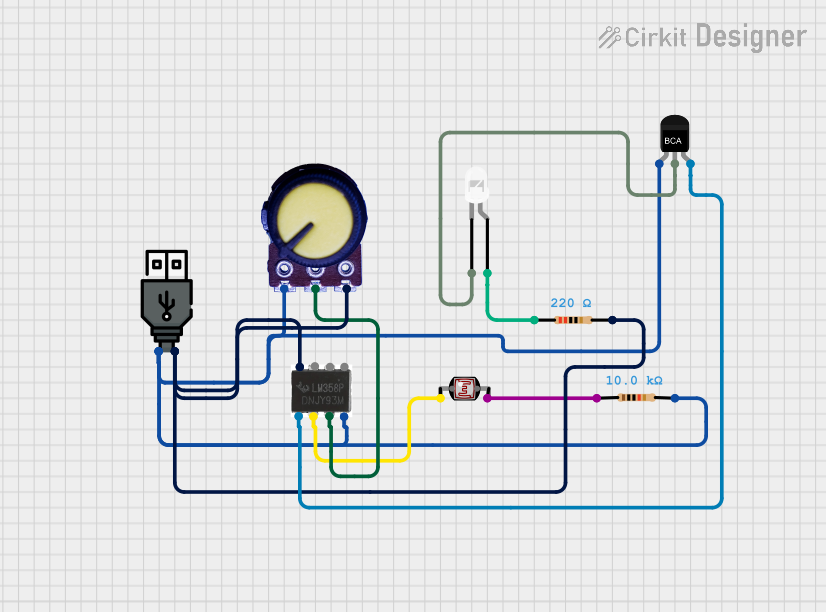
 Open Project in Cirkit Designer
Open Project in Cirkit DesignerExplore Projects Built with LM 358 Module OP-AMP

 Open Project in Cirkit Designer
Open Project in Cirkit Designer
 Open Project in Cirkit Designer
Open Project in Cirkit Designer
 Open Project in Cirkit Designer
Open Project in Cirkit Designer
 Open Project in Cirkit Designer
Open Project in Cirkit DesignerCommon Applications and Use Cases
- Signal amplification in audio and sensor circuits
- Analog filtering for noise reduction
- Voltage comparators
- Signal conditioning for microcontroller inputs
- Oscillator circuits and waveform generation
Technical Specifications
Key Technical Details
- Operating Voltage Range: 3V to 32V (single supply) or ±1.5V to ±16V (dual supply)
- Input Offset Voltage: 2mV (typical)
- Input Bias Current: 45nA (typical)
- Gain Bandwidth Product: 1 MHz
- Output Voltage Swing: 0V to (Vcc - 1.5V)
- Supply Current: 0.7mA (typical)
- Operating Temperature Range: 0°C to 70°C
- Package Type: DIP-8 or SOIC-8 (depending on the module)
Pin Configuration and Descriptions
The LM358 module typically uses the standard DIP-8 package. Below is the pinout and description:
| Pin Number | Pin Name | Description |
|---|---|---|
| 1 | Output 1 | Output of the first operational amplifier |
| 2 | Inverting Input 1 | Inverting input of the first operational amplifier |
| 3 | Non-Inverting Input 1 | Non-inverting input of the first operational amplifier |
| 4 | V- (GND) | Negative power supply or ground connection |
| 5 | Non-Inverting Input 2 | Non-inverting input of the second operational amplifier |
| 6 | Inverting Input 2 | Inverting input of the second operational amplifier |
| 7 | Output 2 | Output of the second operational amplifier |
| 8 | V+ (Vcc) | Positive power supply connection |
Usage Instructions
How to Use the LM358 Module in a Circuit
- Power Supply: Connect the V+ pin (Pin 8) to the positive voltage supply and the V- pin (Pin 4) to ground (for single supply) or a negative voltage (for dual supply).
- Input Connections: Connect the signal to be amplified to the non-inverting input (Pin 3 or Pin 5) or the inverting input (Pin 2 or Pin 6), depending on the desired configuration (non-inverting or inverting amplifier).
- Output: The amplified signal will be available at the corresponding output pin (Pin 1 or Pin 7).
- Feedback Resistor: Use appropriate resistors between the output and input pins to set the gain of the amplifier.
- Bypass Capacitor: Place a decoupling capacitor (e.g., 0.1µF) across the power supply pins to reduce noise.
Important Considerations and Best Practices
- Ensure the input voltage does not exceed the supply voltage range to avoid damage.
- Use proper grounding techniques to minimize noise and interference.
- For high-frequency applications, consider adding a small capacitor in parallel with the feedback resistor to improve stability.
- Avoid driving heavy loads directly from the output; use a buffer if necessary.
Example: Connecting LM358 to an Arduino UNO
The LM358 can be used to amplify an analog signal (e.g., from a sensor) before feeding it into an Arduino UNO's analog input. Below is an example circuit and code:
Circuit Description
- Connect the LM358's V+ pin to the Arduino's 5V pin and the V- pin to GND.
- Connect the sensor output to the non-inverting input (Pin 3).
- Use a feedback resistor and a resistor to ground to set the gain.
- Connect the LM358's output (Pin 1) to an analog input pin on the Arduino (e.g., A0).
Arduino Code Example
// LM358 Amplifier Example with Arduino UNO
// Reads an amplified analog signal and prints the value to the Serial Monitor
const int analogPin = A0; // Analog pin connected to LM358 output
void setup() {
Serial.begin(9600); // Initialize serial communication at 9600 baud
}
void loop() {
int sensorValue = analogRead(analogPin); // Read the amplified signal
float voltage = sensorValue * (5.0 / 1023.0); // Convert to voltage
Serial.print("Amplified Voltage: ");
Serial.print(voltage);
Serial.println(" V");
delay(500); // Wait for 500ms before the next reading
}
Troubleshooting and FAQs
Common Issues and Solutions
No Output Signal:
- Check the power supply connections (V+ and V-).
- Verify that the input signal is within the acceptable range.
- Ensure the feedback resistor is properly connected.
Distorted Output:
- Check if the output is saturating (exceeding the supply voltage range).
- Reduce the input signal amplitude or adjust the gain.
High Noise Levels:
- Add a bypass capacitor across the power supply pins.
- Use shielded cables for input signals.
Overheating:
- Ensure the module is not driving a load beyond its capacity.
- Verify that the supply voltage is within the specified range.
FAQs
Q: Can the LM358 amplify AC signals?
A: Yes, the LM358 can amplify AC signals. Use coupling capacitors to block DC components if necessary.
Q: What is the maximum gain I can achieve with the LM358?
A: The gain is determined by the feedback resistor configuration. However, for stable operation, avoid excessively high gains.
Q: Can I use the LM358 for audio applications?
A: Yes, the LM358 is suitable for basic audio amplification, but it may not provide high-fidelity performance.
Q: Is the LM358 compatible with 3.3V systems?
A: Yes, the LM358 can operate with a supply voltage as low as 3V, making it compatible with 3.3V systems.